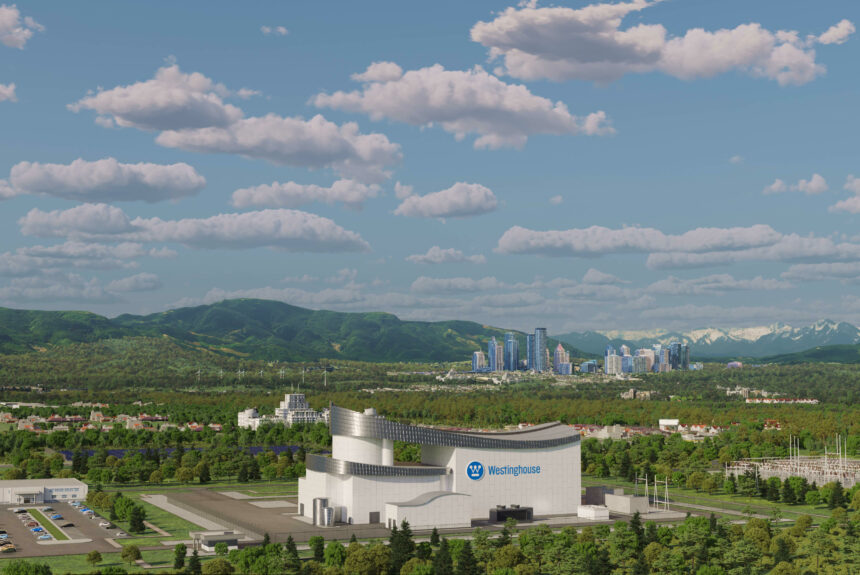Last week Westinghouse Electric unveiled its latest nuclear technology, the AP300 small modular reactor (SMR). The AP300 boasts a 300 MW generating capacity (enough to power 300,000 homes) and has the same innovative safety features as its Westinghouses’ large reactor, the AP1000. Like the AP1000, the AP300 is designed to operate at a high capacity for 80+ years. However, unlike the AP1000, the smaller-scale AP300 utilizes a single steam generator instead of two and runs at a fraction of the price. Westinghouse estimates each unit will cost around $1 billion, versus the projected $6.8 billion price tag of a conventional AP1000 power plant, according to research from MIT.
“We’re talking about the same technology, the same equipment, the same safety basis,” David Durham, president of energy systems at Westinghouse, told POWER in an interview.
>>>READ: What Will 2023 Look Like for Small Nuclear Power?
The AP300 is suitable for a vast array of industrial applications like district heating, water desalination, and hydrogen production, according to the Westinghouse website. Apart from delivering emissions-free electricity, small reactors are also valuable sources of carbon-free heat. Essentially, the AP300 is a more versatile version of the AP1000. Due to its proven design drawing on demonstrated and licensed technology, the timeline for construction of an AP300 plant has been cut to about three years. This makes it an attractive option for utility providers looking to supply customers with clean electricity at an affordable price or countries aiming to decarbonize.
“The AP300 is the only small modular reactor offering available that is based on deployed, operating and advanced reactor technology,” Westinghouse President and CEO, Patrick Fragman said. “The launch of the AP300 SMR rounds out the Westinghouse portfolio of reactor technology, allowing us to deliver on the full needs of our customers globally, with a clear line of sight on schedule of delivery, and economics.”
Additionally, SMRs are ideal for replacing retired coal power plants, which are being phased out by utility operators due to market conditions, expiring licenses, and environmental regulations. A recent report from the Bipartisan Policy Center found that roughly 80% of retiring and soon to be retired coal plants have the basic characteristics that are needed to be repowered by SMRs, which include minimal changes in transmission infrastructure. Additionally, 77% of coal jobs are transferable to nuclear plants with no additional workforce licensing required. Small reactors like the AP300 yield roughly the same amount of electricity as the typical coal plant––minus the emissions.
To date, only one SMR design, NuScale’s Voygr, has received approval from the U.S. Nuclear Regulatory Commission. Westinghouse is aiming for federal approval of the new design by 2027, with construction of the first unit to begin by the end of the decade. The technology is expected to come online by 2033.
>>>READ: NRC Certifies NuScale’s Small Modular Reactor Design in Historic Ruling
Other notable products from Westinghouse include the eVinci Microreactor, a next-generation miniature heat pipe reactor akin to a nuclear battery that can operate autonomously. The mobile energy generator is ideal for decentralized remote applications and can be rapidly installed on-site in less than thirty days.
“One aspect of many of the advanced reactor technologies, including high-temperature gas, molten-salt and sodium fast reactors, is they can produce industrial grade heat for non-power purposes or combined heat and power applications for industries such as steel making, chemical production, cement production, milling, and mining,” Jeffrey S. Merrifield, a nuclear energy lawyer and former commissioner of the U.S. Nuclear Regulatory Commission, told CNBC.
The launch of Westinghouse’s game-changing reactor is proof that the private sector is working hard to expand access to clean energy. As demand for power generation increases, the nuclear industry is taking an active approach in delivering innovative solutions to provide emissions-free, affordable and reliable power to the world.
The views and opinions expressed are those of the author’s and do not necessarily reflect the official policy or position of C3.
